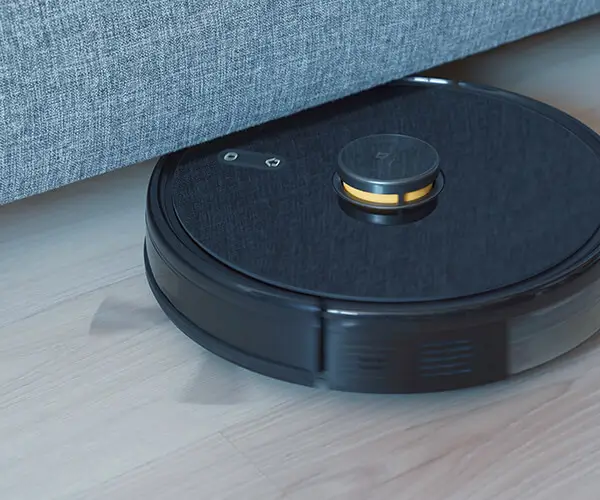Unleashing Innovation: A Complete Guide to Controlling Servo Motors with ESP32
If you’ve dipped your toes into the world of electronics and microcontrollers, chances are you’ve heard about the ESP32—an incredibly powerful, versatile, and affordable microcontroller that has revolutionized DIY electronics. From smart home automation to robotics, its capabilities are practically limitless. One of the fundamental components used in many of these projects is the servo motor—a device that allows precise control of angular position, making it a perfect partner for robotic arms, camera gimbals, or automated systems.

In this article, we’ll explore how to write effective ESP32 code for controlling servo motors. Whether you're just starting or looking to refine your skills, this guide will give you a comprehensive understanding of the necessary hardware, software, and best practices.
Understanding the ESP32 and Servo Motor
Before diving into coding, it’s crucial to understand what makes the ESP32 so powerful and how servo motors operate.
The ESP32 is a dual-core Wi-Fi and Bluetooth-enabled microcontroller with an extensive set of GPIO pins, analog inputs, PWM capabilities, and more. Its versatility allows for multiple projects to run simultaneously, making it a favorite among hobbyists and professionals alike.
Servo motors are rotary actuators controlled by the width of a PWM (Pulse Width Modulation) signal. They typically accept a control signal with a pulse width between approximately 1 ms and 2 ms, corresponding to 0° to 180° rotation, though this can vary depending on the servo model.
Hardware Setup
Before writing any code, proper hardware connection is essential. Here is a simple guide:
Power Supply: Ensure your servo motor is powered with an adequate power source, ideally separate from the ESP32 to prevent voltage dips.
Connections:
Servo Signal Pin → ESP32 GPIO pin (e.g., GPIO 13)
Servo Power (VCC) → +_VBAT (typically 5V)
Servo Ground (GND) → GND (common ground with ESP32)
Note: Verify your servo's voltage and current ratings to avoid damaging your components.
Getting Started with Code
Now that hardware is in place, let’s outline the core of our program: generating PWM signals compatible with the servo motor using the ESP32.
The ESP-IDF (Espressif IoT Development Framework) and Arduino core are two main options for programming the ESP32. For simplicity and accessibility, we’ll focus on the Arduino IDE, which is widely used among hobbyists.
Setting Up the Arduino Environment
Install the Arduino IDE (if not already installed). Add ESP32 support via the board manager: Go to File > Preferences. Add the following URL to the “Additional Board Manager URLs”: https://dl.espressif.com/dl/package_esp32_index.json In Tools > Board > Boards Manager, search for "ESP32" and install.
Select your board type (e.g., “ESP32 Dev Module”).
Connect your ESP32 to the computer via USB.
Basic Servo Control Using PWM
The Arduino core provides a Servo library that simplifies servo control. Let’s use it.
#include Servo myServo; // create a servo object int servoPin = 13; // GPIO pin connected to servo signal wire void setup() { myServo.attach(servoPin); // attaches the servo on GPIO 13 } void loop() { // move to 0 degrees myServo.write(0); delay(1000); // wait 1 sec // move to 90 degrees myServo.write(90); delay(1000); // move to 180 degrees myServo.write(180); delay(1000); }
This simple code smoothly moves the servo between 0°, 90°, and 180°, pausing at each position. The Servo library handles PWM signal generation internally, making the process straightforward.
Adjusting for Precision and Custom Control
For more refined control or custom PWM signals, you might want to generate signals manually, especially if you're aiming for more complex control schemes or multiple servos.
ESP32’s hardware PWM channels enable precise control by configuring timers and channels. You can set up PWM signals directly on the GPIOs you choose, providing finer control over signal parameters.
Here's a snippet illustrating how to set up PWM manually:
#include const int servoPin = 13; // GPIO pin const int freq = 50; // 50 Hz for servo PWM const int ledChannel = 0; // PWM channel void setup() { ledcSetup(ledChannel, freq, 16); // 16-bit resolution ledcAttachPin(servoPin, ledChannel); } void moveServo(int angle) { int dutyCycle = map(angle, 0, 180, 102, 512); // mapping angle to duty cycle ledcWrite(ledChannel, dutyCycle); } void loop() { moveServo(0); delay(1000); moveServo(90); delay(1000); moveServo(180); delay(1000); }
In this example, you manually control the duty cycle to position the servo at specific angles. Fine-tuning the mapping helps achieve more accurate positioning.
Calibration and Troubleshooting
For precise movement, you might need to calibrate your servo's minimum and maximum pulse widths. Use an oscilloscope or logic analyzer if available, or adjust delay and duty cycle values until movements are smooth and accurate.
Common issues include:
Servo jitter or not holding position: Ensure power supply is stable and capable of delivering enough current. Servo under/over-rotating: Check the pulse width range and calibrate accordingly. Unresponsive servo or code errors: Verify wiring, choose the correct GPIO pin, and ensure libraries are properly installed.
Part 2 of this article will continue with advanced topics, such as controlling multiple servos simultaneously, integrating sensors, real-time positioning, and automating complex movements with ESP32. We'll also explore power management and best practices for deploying your servo-based projects effectively.
Leveraging innovations in modular drive technology, Kpower integrates high-performance motors, precision reducers, and multi-protocol control systems to provide efficient and customized smart drive system solutions.




































